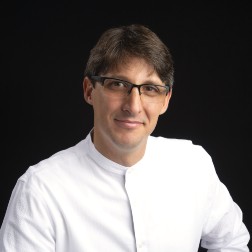


8:15am - 9:45am:
Introductory remarks & LECTURE
9:45am - 10:00am:
15 minute break
10:00am - 11:15am:
LECTURE continues
11:15am - 11:30am:
Q&A
11:30am - 12:15pm:
Lunch break
12:15pm - 1:30pm:
LECTURE continues
1:30pm - 1:45pm:
15 minute break
1:45pm - 3:00pm:
LECTURE continues
3:00pm - 3:30pm:
Q & A
Adhesion Theory Part 1
An in depth and state of the art scientific session covering the latest research and understanding of dental adhesion. From tooth embryology and development to the adhesion generations.
Adhesion Theory Part 2
Once the optimal adhesive protocol has been discussed, we will delve into the science of improving the protocol. Which techniques and methods can prolong the life of the bonding interface? We will also cover the true science behind the use of rubber dam.
Cad Cam Dental Materials
During this session we will classify, test and differentiate among all of the Cad Cam dental materials on the market. Even if you don’t have a milling unit in the office your laboratory does and they are milling everything. This is why Cad Cam dental materials are the most important materials in dentistry today. We will cover everything you need to know about them and we will discover that there is enough Dental Literature to support the choice of one vs the other.
The Neuroscience of Dentistry
Many lectures on “color theory”, “Shade Taking”, “Lab Communication”, etc. do NOT consider the human brain as a natural limitation. This lecture may entirely change your understanding of color theory, perception, evaluation and communication.
About the Speaker
Dr. Miguel A. Ortiz began working in the dental industry as a Dental Technician in 2002 after graduating from one of the only two-year ADA accredited programs in California State. During the next 8 years he both worked and studied full time in Los Angeles, receiving a B.S. Biochemistry with Honors from California State University. He was recruited to Harvard School of Dental Medicine, where he won the Leo Talkoy Award for excellence in clinical dentistry and his Doctorate of Dental Medicine, (DMD). Dr. Ortiz went on to become a Prosthodontist at the University of Illinois at Chicago in 2017. During his training he mastered the art and science of aesthetic and implant dentistry, full mouth rehabilitation and bone regeneration.
His passion for teaching and advancing dental education led Dr. Ortiz to found DentLit, an organization dedicated to highlighting best practices where the art and science of dentistry intersect. DentLit is a place where evidence based dentistry truly flourishes, allowing users to find answers to common dental questions.